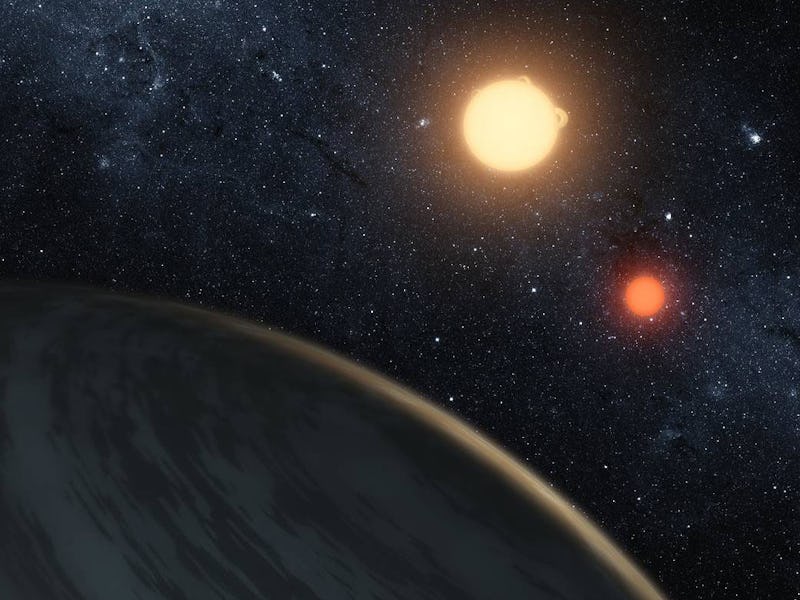Binary Stars Create a "Danger Zone" That Ejects Planets Orbiting Them into Space

Have you ever been so viscerally frustrated with something you wanted to hurl it straight into the final frontier? Apparently, this is what some star systems do when they’re angry, bored, or both. An astronomer explains the phenomenon to Inverse.
According to a new study accepted for publication in the Astrophysical Journal, circumbinary planets — or worlds that orbit around two stars also orbiting each other — can be ejected into space by their host stars. For years, it’s been difficult to spot circumbinary planets, but now, astronomers think this strange process could explain why. You can’t tell if a planet was wandering around a star system if a binary pair had booted it off into space.
Short-period binary stars are a specific class of binary star. These stars, locked in an ultra-tight tango, orbit each other in roughly 10 days or less. Using computer simulations, researchers found that the gravitational pulls “short-period” binary stars exert on each other can cause these worlds to rocket off into space.
The binary stars’ gravitational influence on each other changes both stars’ orbital paths, creating a “region of instability” over time. This is the danger zone for a circumbinary planet, so if a world moves into this region, chances are it’s going to get kicked out. Researchers call the phenomenon Stellar Tidal Evolution Ejection of Planets or STEEP.
“The ‘danger zone,’ or region of instability, around binary stars arises from the time-varying gravitational force the stars exert on any planets orbiting them, like circumbinary planets in this case,” the study’s lead author David Fleming, a University of Washington astronomy doctoral student, tells Inverse. “If a circumbinary planet falls within this region, it effectively gets too close to the stars where the force gravity exerts is stronger, often ejecting these planets out of the system. My mechanism shows that tidal forces between the stars expand the size of the binary orbit and also expands the ‘danger zone,’ enveloping the circumbinary planets, causing them to get kicked out of the system.”
Kepler 16-b, a circumbinary star that orbits a binary star called Kepler-16.
Astronomers and astrobiologists have dissenting opinions on studying circumbinary planets for their habitability. NASA scientists have speculated over whether or not Kepler 16-b, a circumbinary planet orbiting the Kepler-16 binary star, could harbor life. The researchers on this project seem to agree that it’s worth investigating these mysterious worlds, but say it’ll be complicated.
“Circumbinary planets can be good candidates for habitability studies, but we need to find more circumbinary planets before we can start rigorously analyzing them,” Fleming explains. “For example, astronomers hope to find rocky Earth-like planets, like our own, to look for habitability, but currently astronomers have only discovered Neptune-size circumbinary planets and larger, no Earth-size ones yet! STEEP does complicate finding life of circumbinary planets around short-period binary stars because it can eject those planets from the system.”
Just another reason why space is metal and unforgiving as hell.